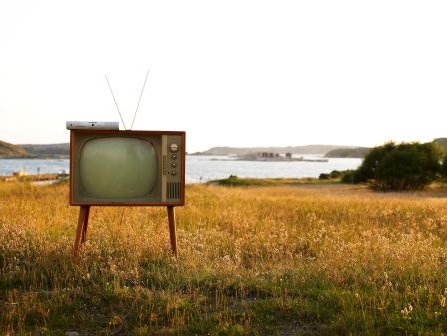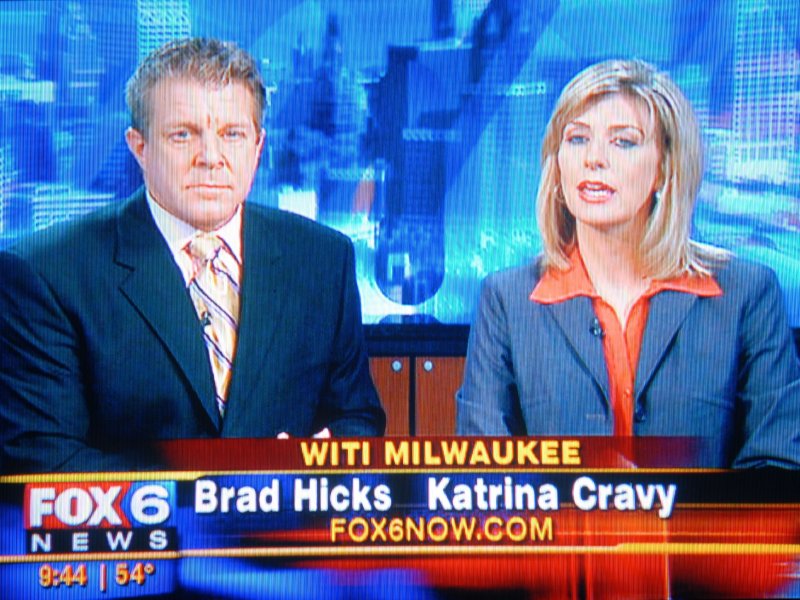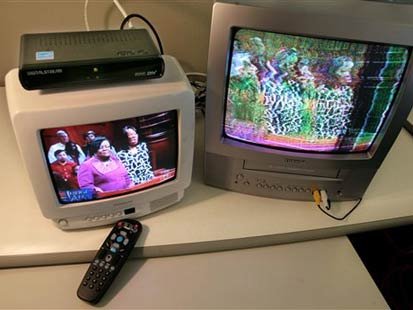Here at OnMilwaukee.com, we pride ourselves in being Milwaukee experts. Since it is literally our job to eat, sleep and breathe all things Brew City, we get many questions from our readers.
This is where we answer them.
In the "Ask OMC" series, we take your questions, big or small, and track down the answers. Send your query to askomc@staff.onmilwaukee.com. Be sure to include your name and location, and we will consider it for our next installment.
Our question today comes from Bruce in Franklin, who asks:
"I keep hearing about this TV conversion that is going to take place next month. What's the deal? Is it going to affect me at all?"
Bruce, you've obviously missed numerous news stories, commercials, on-air tests and informational "crawls" across the bottom of the screen, but that's OK. We're here for you.
On Feb. 17, the country is scheduled to switch to all-digital broadcast television. That means that older TVs -- the kind people use with "rabbit ear" antennas or those big things on the roof of their homes, will not work.
TV stations have been talking about the switch for months, the federal government has offered coupons for digital converter boxes that will help older TV sets work after the flip, but many people still don't know what is going on.
According to the Nielsen Co., the marketing research folks responsible for compiling TV ratings, more than 7 million American households are unprepared for the change.
That's one reason some lawmakers want to delay the transition.
Here are some other questions and answers about the switch:
Question: Why are we doing this?
Answer: The federal government wants to end analog over-the-air broadcasting in favor of digital, which uses fewer public airwaves. Many stations have been broadcasting a digital signal in addition to their standard over-the-air signal.
The switch will open more room for mobile devices and faster, better mobile Internet access.
Question: Do I need to worry about it?
Answer: Since most people already get cable or satellite TV, this won't affect many consumers. If your TV is older and still uses rabbit ears or an on-the-roof antenna, you're going to see nothing but snow on the screen unless you get a converter.
Question: What kind of TVs receive digital signals?
Answer: Newer TVs have a built-in digital tuner. If your TV has one, you should be getting two versions of most channels when you watch through an antenna (Channel X and Channel X-1, for example). If you're not getting digital versions of several channels, then your television probably isn't compatible with digital broadcast TV. Check the back of your TV. If you see an input labeled "digital" or "ATSC," you should be in business. The analog input is labeled "NTSC."
Question: My TV is old. What's the deal with the converter box?
Answer: The box will transform the analog signal into digital. The boxes cost between $40 and $80, and you can find them where TVs are sold. (Analog sets can no longer be sold in stores).
Congress created a coupon program, which allowed each U.S. household to receive two coupons worth $40 each. The program ran out of money earlier this month, which means that the waiting list now has 2 million names. Those people on the list will get coupons once some of the coupons distributed earlier reach the 90-day expiration date.
Most people on the waiting list won't get coupons before the switchover date, so Congress is trying to expand funding for the program to try to get more coupons to consumers. That's why there is a move to delay the transition date, which was established two years ago.
Question: How can I get a coupon?
Answer: Get on the waiting list by calling (888) 388-2009 or by going to dtv2009.gov. The deadline for applying is March 31. If you go to the store and buy one without a coupon, your chances of being reimbursed are lower.
Question: Is there any way I can avoid getting the box?
Answer: If you're thinking about buying a new DVD player or digital video recorder, you could buy one with a built-in digital converter. The cost will run between $180 to $300. Or, you could buy a new digital TV. You can get really good pictures from 27-inch models that run about $250. Or, you could subscribe to basic cable service, which would cost about $10 or $15 per month.
Question: When will we know if the date is going to move?
Answer: Lawmakers are haggling right now. Some argue that moving the date back would be too confusing. Others think that it's unfair to penalize consumers on the waiting list for coupons in an underfunded program.
In other words, stay tuned.






